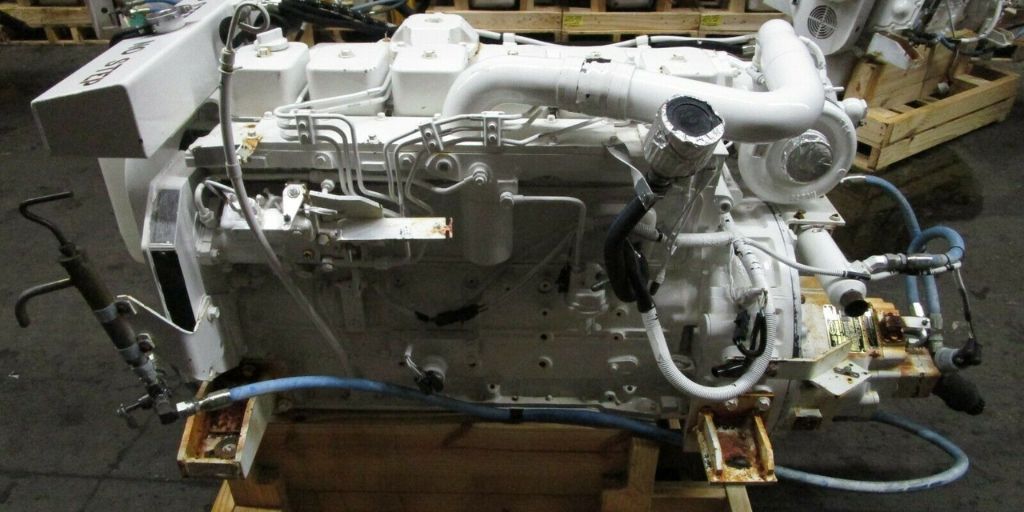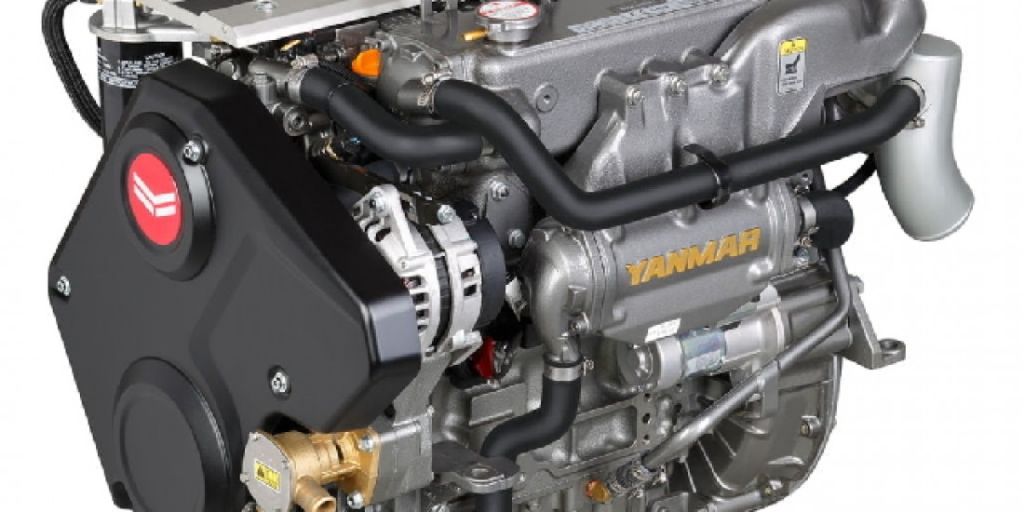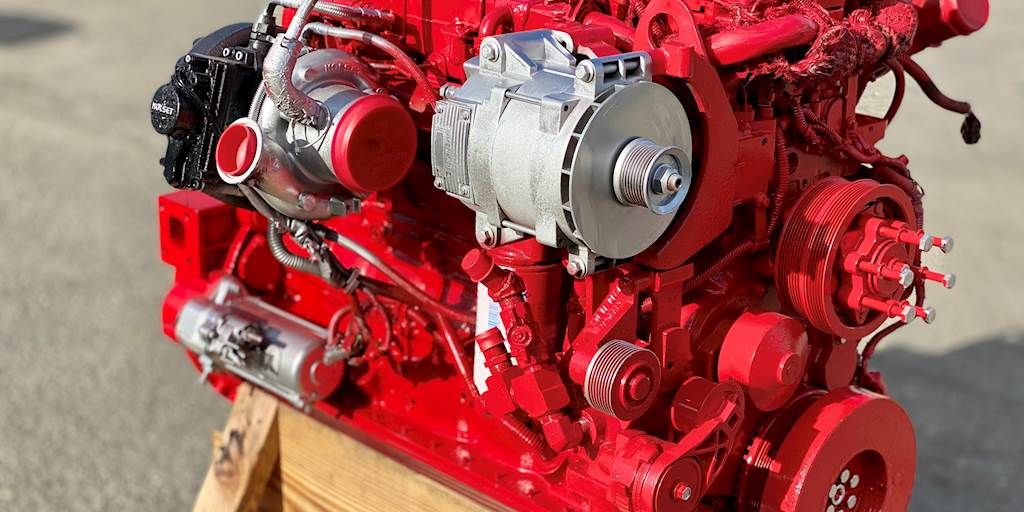When disaster strikes, every second counts, and the tools and equipment used in the aftermath play a pivotal role in saving lives and restoring order.
From earthquakes and floods to wildfires and hurricanes, the unpredictability of natural calamities requires precise, reliable, and resilient systems to respond effectively.
One of the most critical components in these response efforts is the engine. Whether it powers vehicles, generators, water pumps, or rescue equipment, the engine is the heart of disaster relief operations.
Without reliable machinery, crucial tasks such as rescue operations, providing shelter, supplying clean water, or even restoring electricity could be significantly hindered.
In disaster zones, engines must be more than just functional; they must withstand the harshest environments and continue performing under extreme stress. This reliability is not just a matter of preference; it’s a matter of life and death.
Trust in these engines is built over time, through repeated success in high-stakes situations. The engines must not only be durable but also easy to maintain, fuel-efficient, and capable of operating in the most challenging conditions.
Throughout the world, several manufacturers and engine models have earned a reputation for their performance in disaster zones.
From the rugged terrains of the Himalayas during earthquake relief to floodwaters in Southeast Asia, trusted engines have been indispensable in minimizing the damage caused by these disasters.
This article will explore the types of engines that are most trusted in disaster zones, the key manufacturers behind them, and real-world examples where these engines have proven invaluable.
Ultimately, we will uncover why these engines are more than just machines—they are critical lifelines in some of humanity’s most devastating situations.
Also Read: The Engines Mechanics Would Bet Their Own Money On
The Most Trusted Engines in Disaster Zones Around the World
Role of Engines in Disaster Zones
In disaster zones, engines power essential equipment that ensures rescue efforts can be carried out effectively.
Whether it’s a power generator supplying energy to emergency shelters, heavy-duty vehicles navigating rough terrain, or water pumps clearing flooded areas, engines are at the core of every vital operation.
They provide the reliability and endurance needed to overcome challenges that arise when infrastructure is damaged, and the environment becomes unstable.
The first role of engines in these settings is to provide electricity. In the aftermath of an earthquake, for example, power lines are often down, and the electrical grid may be destroyed.
In these scenarios, portable generators—driven by high-performance engines—become the main source of power.
These generators are crucial for powering communication systems, hospitals, and shelters. For instance, in the aftermath of Hurricane Katrina in 2005, generators powered field hospitals and other vital facilities when local power grids failed.
Without reliable engines powering these generators, critical operations would have been severely hampered, jeopardizing lives and delaying recovery efforts.
Next, engines also serve as the driving force behind rescue vehicles. When debris, floods, or landslides block roads, specialized vehicles equipped with powerful engines become essential for rescue teams to access affected areas.
These vehicles include everything from all-terrain trucks to helicopters and boats, and they rely on robust engines to traverse difficult terrains.
Such vehicles are often the first to reach areas that are otherwise inaccessible by foot or conventional vehicles, making engines a vital component in saving lives in the critical hours after a disaster strikes.
Lastly, water pumps play an important role in managing floodwaters and providing clean drinking water.
In areas affected by floods, water pumps powered by durable engines can drain massive amounts of water from flooded zones, opening up pathways for rescue operations.
These pumps can also be used for purifying water, ensuring that survivors have access to potable water in situations where clean water supply systems are disrupted.
In the case of the 2004 Indian Ocean Tsunami, engines powered water pumps that helped evacuate floodwaters from affected coastal towns, providing immediate relief.
Key Types of Engines Used in Disaster Response
Different types of engines are used for a variety of purposes in disaster zones. Understanding the different engine categories is critical in identifying which types are best suited for specific needs. Here are some key types of engines and their applications:
Diesel Engines:
Diesel engines are commonly used in disaster zones due to their durability and fuel efficiency. Diesel generators are the most frequently used power source when electricity is unavailable. Diesel engines also power vehicles, water pumps, and other heavy-duty equipment.
One of the main advantages of diesel is its fuel efficiency, which is especially important in remote areas where fuel supply may be limited.
Diesel-powered engines also tend to be more robust and capable of operating in extreme conditions, including high temperatures, humidity, and dirt.
This makes diesel engines ideal for long-term deployment in disaster zones, where power outages can last for extended periods.
Gasoline Engines:
While less common than diesel engines, gasoline engines are still used in portable equipment such as smaller generators, lawnmowers, and pumps. Gasoline engines are generally smaller, lighter, and easier to maintain.
They are ideal for smaller-scale operations or areas where mobility is a key factor. However, in larger-scale disaster operations, gasoline engines are often not as reliable or efficient as their diesel counterparts.
Gasoline engines also tend to have a shorter operational lifespan when used under extreme conditions, limiting their overall usefulness in disaster zones.
Electric Engines:
With the growing emphasis on sustainability, electric engines are becoming more common in disaster relief efforts, especially for smaller, more portable equipment like generators or vehicles.
Battery-powered tools, vehicles, and smaller pumps can reduce the need for fuel and reduce environmental impact.
However, electric engines are typically less powerful and require a steady supply of batteries or access to charging facilities, which can be a challenge in a disaster zone.
Moreover, in the case of larger operations, such as large-scale water pumping or operating heavy-duty vehicles, electric engines are still limited in their capacity and endurance.
Hybrid Engines:
Combining the best of both worlds, hybrid engines use both electric and traditional fuel sources (typically diesel or gasoline). These engines offer a balance of power and efficiency and can switch between energy sources depending on availability.
In disaster zones where fuel supply is inconsistent or where environmental concerns are high, hybrid systems are proving to be an innovative solution.
For example, hybrid-powered vehicles have the potential to operate quietly and efficiently in densely populated disaster zones, where noise reduction is essential for maintaining order and calm among survivors.
Trusted Engine Models and Manufacturers in Disaster Zones
Several manufacturers have earned a reputation for producing reliable engines that are trusted around the world in disaster relief efforts.
These engines are specifically designed to withstand harsh conditions and provide the performance needed in critical situations.
Cummins Engines:
One of the most recognized names in the world of disaster relief is Cummins, an American company known for its high-performance diesel engines.
Cummins engines are used in a variety of disaster response equipment, including power generators, ambulances, and heavy-duty rescue vehicles.
Their QSK series of engines are particularly favored in disaster zones for their ability to perform in extreme conditions.
For example, Cummins engines played a crucial role in powering rescue equipment during the 2011 Japan earthquake and tsunami, ensuring continuous operation of vital machinery when local infrastructure collapsed.

In addition, their robust engine models like the Cummins X15 are often chosen for large-scale disaster recovery efforts due to their powerful output and fuel efficiency.
Caterpillar Engines:
Another trusted name in the disaster response industry is Caterpillar. Known for its rugged, high-performance diesel engines, Caterpillar engines power everything from large generators to bulldozers and excavators.
Their engines are widely used in rescue operations after earthquakes, floods, and hurricanes. Caterpillar’s C18 and C32 engines are designed to provide reliable power under difficult conditions, making them a popular choice in disaster zones.
For instance, during the 2010 Haiti earthquake, Caterpillar-powered generators provided much-needed power to hospitals and shelters.
Furthermore, Caterpillar’s fleet of heavy machinery, powered by their engines, has been pivotal in clearing debris and rebuilding efforts after major natural disasters worldwide.
Honda Engines:
Honda has long been recognized for producing small, portable engines that are ideal for disaster zones, particularly in small generators and water pumps. Honda engines are well-regarded for their reliability and ease of maintenance.
In addition, their EU series of generators is known for being both quiet and fuel-efficient, making it ideal for use in emergency shelters where noise levels can be a concern.
Honda-powered engines are frequently deployed in regions affected by natural disasters, including after the 2017 earthquake in Mexico, where Honda generators were used in relief efforts.
Honda’s reputation for producing highly reliable, durable engines in compact forms has made them a key player in global disaster response operations.
Yanmar Engines:
Yanmar, a Japanese manufacturer, is a leader in producing reliable diesel engines used in a wide range of disaster relief equipment. Their engines are known for their high fuel efficiency and long-lasting durability.
Yanmar engines are used in everything from small portable generators to large earth-moving machines. Their 3TNV88 engines, for example, are commonly used in water pumps and generators in flood-affected regions.
Yanmar engines have been used extensively in Southeast Asia, particularly in flood-prone areas, where water pumping operations are critical for disaster relief.
Real-World Examples of Trusted Engines in Action
The real measure of any engine’s reliability is its performance in actual disaster situations. Several instances demonstrate the importance of these engines in saving lives and supporting recovery efforts.
Hurricane Katrina (2005):
Following the devastation of Hurricane Katrina in New Orleans, trusted engines in generators and vehicles played a crucial role in rescue and recovery efforts.
Cummins diesel generators powered emergency shelters and medical facilities, while Caterpillar bulldozers cleared debris to allow rescue teams access to stranded survivors.
The quick deployment of engines in these situations allowed for rapid response, helping to restore some semblance of normalcy in the chaotic aftermath of the storm.
2011 Japan Earthquake and Tsunami:
In Japan, where the infrastructure was heavily damaged by the earthquake and subsequent tsunami, engines in power generators and rescue vehicles were critical for the relief effort.
Caterpillar and Cummins engines powered essential equipment used to clear debris, pump water from flooded areas, and provide electricity to emergency shelters.
These engines were instrumental in ensuring that hospitals, shelters, and relief stations had continuous power in the wake of the disaster.
2017 Mexico Earthquake:
After the devastating 7.1 magnitude earthquake in Mexico City, engines from Honda generators were used to power hospitals and aid stations.
The quiet, efficient Honda generators ensured that essential operations could continue despite widespread power outages.
Honda’s reputation for small, portable, and reliable engines made them an invaluable asset in the immediate aftermath of the quake, providing power where it was needed most.
Innovations in Engine Technology for Disaster Relief
As the demand for better disaster response capabilities grows, engine manufacturers are innovating to meet these needs.
There have been advancements in engine technology aimed at improving fuel efficiency, reducing emissions, and increasing reliability in extreme conditions.
Eco-Friendly Engines:
With growing concerns over environmental impacts, companies are working to create engines that reduce emissions while maintaining performance.
Hybrid and electric engines are becoming more common, offering the potential for a cleaner, more sustainable approach to disaster response.
For example, hybrid-powered vehicles could one day be used in disaster zones to reduce reliance on fuel and cut down on noise pollution in densely populated areas.
Telematics and Remote Monitoring:
Many modern engines come equipped with telematics systems that allow operators to remotely monitor engine performance.
This technology is useful in disaster zones, as it can provide real-time diagnostics and alerts, helping maintenance teams address issues before they become critical.
By using these advanced features, operators can ensure that engines are running smoothly, minimizing downtime and increasing the overall efficiency of relief operations.
The importance of trusted engines in disaster zones cannot be overstated. These engines power the equipment and vehicles that are essential for responding to natural disasters, providing the lifeline needed to save lives, restore order, and begin recovery efforts.
Whether it’s through powering generators to provide electricity to hospitals, clearing debris with bulldozers, or pumping water from flooded areas, engines are at the core of disaster relief operations.
Their reliability, durability, and ability to function in extreme conditions make them indispensable in saving lives when every moment counts.
Manufacturers like Cummins, Caterpillar, Honda, and Yanmar have earned their place as leaders in this field by consistently providing engines that perform under the harshest conditions.
These engines power everything from portable generators and water pumps to all-terrain vehicles and heavy machinery. They are the backbone of disaster relief, ensuring that rescue efforts are not delayed, power is restored, and essential services continue in the face of devastation.
Real-world examples such as the 2005 Hurricane Katrina response and the 2011 Japan earthquake show how vital these engines are to the survival of communities during and after a disaster.

As technology continues to advance, so too does the ability of engines to meet the growing challenges of disaster response. Innovations in fuel efficiency, hybrid and electric technology, and remote monitoring are helping to make engines even more reliable and sustainable.
These advancements are not just about improving the machines themselves; they are about improving the ability of relief organizations to act quickly and efficiently in times of crisis.
In the end, the engines that power disaster response equipment do more than just function—they provide hope, security, and the means to rebuild.
As natural disasters continue to increase in frequency and intensity around the world, the importance of having trusted engines in place cannot be ignored.
These engines will remain a critical component of disaster relief, helping to mitigate the devastation and enable recovery efforts for years to come.
Also Read: Top Engines That Outlived the Brands That Made Them

